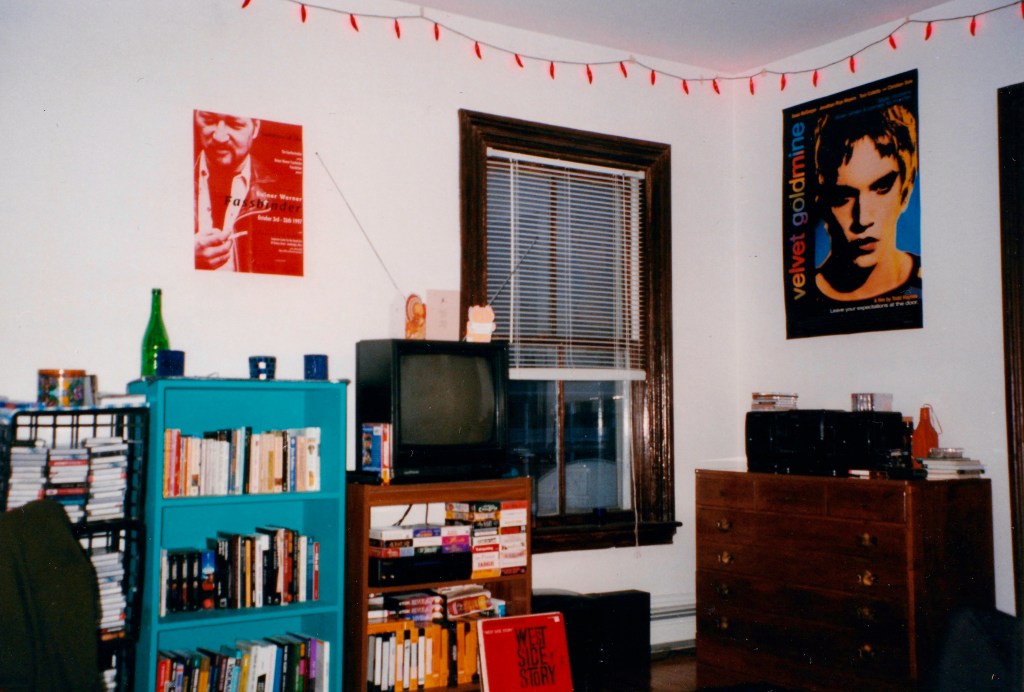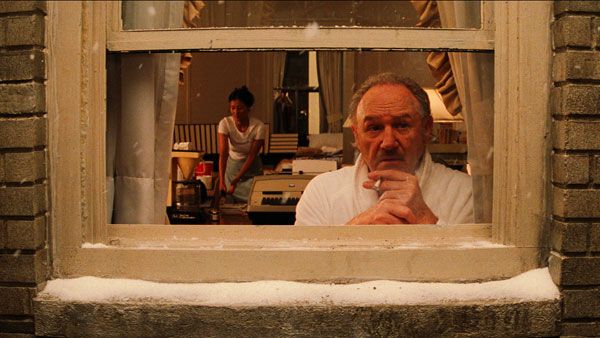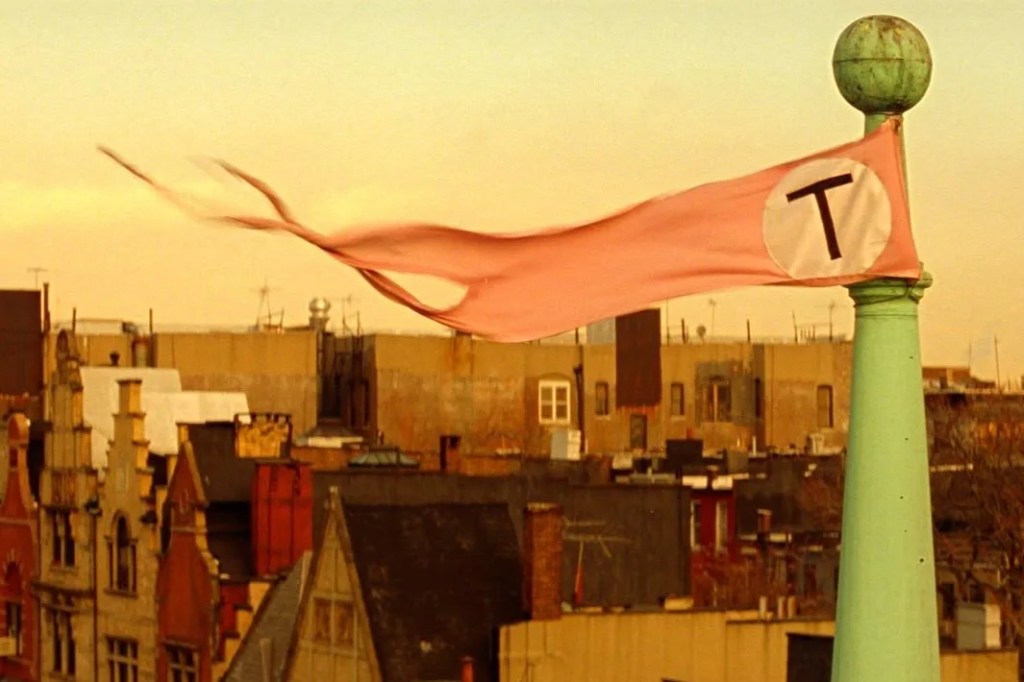
Pauline Kael rarely saw a movie more than once. Even near the end of her life, long after her tenure as film critic at The New Yorker, she remarked, “I still don’t look at movies twice. It’s funny, I just feel I got it the first time.” While Kael’s quirk is a notorious one, it’s to some extent explicable given that she spent most of her career pre-home video. Apart from theatrical releases or even private screenings, she had limited access to rewatching a title, at least compared to today’s wealth of viewing options. Yet even with them, of the thousands of films I’ve seen over the past three decades, there’s at least half, maybe even two-thirds that I’ll likely never rewatch or want to revisit. After all, if I limited myself to first-time watches, I’d never run out of new things to see.
Still, a world where I never again returned to Mulholland Drive, Beau Travail or Young Frankenstein holds little appeal. I acknowledge that films (and, for that matter, books and episodic television series) require a heftier time commitment than a favorite piece of music. I can prepare for an essay on an album by listening to it four or five times over the course of a day; for one on a film like 2001: A Space Odyssey, however, I’d need to put at least 10-15 hours for an equivalent experience. As a visual medium, movies require closer concentration. Unless you literally know one by heart, you arguably can’t put it on in the background and absorb it while attending to other tasks as you could with any piece of music from Abbey Road to ABBA Gold.
I’ll often rewatch a movie for one of three reasons: it’s playing theatrically, available for streaming or just simply one of my favorite films. Accessibility plays a key role here but so do other factors. Is it something I’d love to see on a cinema’s big screen given the opportunity? Do I revisit it because I haven’t watched it in decades and want to see how well it holds up (or not)? Has the film been in my thoughts for whatever reason (for instance, having read a web article or a social media post about it), or is it something I love to rewatch because it gives me joy, no matter how many times I view it?
Particularly in the pre-streaming age, this last reason was my most common for wanting to see a film again (and in some cases, again and again.) When my family acquired our first VCR in 1985, we soon accumulated a cabinet overflowing with recorded VHS tapes of favorite movies and TV shows I’d watch repeatedly, from childhood favorites like Race For Your Life, Charlie Brown to movies such as Monty Python and The Holy Grail and dozens of episodes of Mystery Science Theater 3000. I replayed some more than others but the novelty and attraction of having a permanent record of something I loved to watch whenever I wanted (often for the price of a blank tape) was considerable. Even later on, when VHS tapes largely became priced-to-own (instead of priced-to-rent), for comparatively little money one could proudly curate a collection of favorite titles akin to having shelves of CDs or stacks of vinyl.

Beyond accessibility or convenience, that “it” factor which draws us repeatedly to a particular work of art is harder to pinpoint. I may as well have watched Trainspotting over a dozen times because I owned it on VHS (and later, DVD) but I didn’t just watch it because it was there. Something in it beckoned me to want to see it again and again because I got something out of it (and in most cases, something different) each time. I’ve revisited films that don’t hold up to subsequent viewings—La La Land is a good recent example. While I appreciated its invention and audacity the first time through, after rewatching it ten days later with my family, my first thought leaving the cinema was, “Well, I never need to see that again.” In this case, the novelty had worn off, enabling me to see the film’s flaws more clearly. Luckily, most rewatches are worth the time and effort, even if they all can’t be as continuously rewarding as Trainspotting which took me a few run-throughs to fully comprehend the deeper, often ironic implications beneath all the flash and fury of its editing, music and performances.
There’s also comfort in returning to favorite works of art. While as a well-rounded film critic I strive to seek out titles I haven’t seen before (both new and old), I return to specific ones because their familiarity provides solace, often for various reasons. I’ll rewatch some films as a tradition in celebrating a particular season like Christmas or Halloween (for years, the latter wasn’t complete without a viewing of Dario Argento’s Suspiria or the Bela Lugosi Dracula.) Others I’ll put on when I’m in a particular mood: Bringing Up Baby for screwball comedy, Back To The Future for 1980s escapism, Beyond The Valley Of The Dolls for psychedelic, counterculture exploitation. What pleasure I find in these films is, like any work of art, entirely subjective; for instance, Katherine Hepburn and Cary Grant together never fail to make me laugh (which is why I also adore Holiday), the Robert Zemeckis film came out when I was 10 and had a formative impact on me at the time and the Russ Meyers-directed, Roger Ebert-scripted film is so gloriously bonkers that watching it is never less than a blast.
Rarer than isolated titles lending themselves to multiple viewings are those entire oeuvres of a particular filmmaker that do so. Naturally, I’ve revisited many works by some of my favorite directors from Robert Altman to Claire Denis. Over time, Wes Anderson has proven something of an ideal in this regard. Most of his films hold up to additional viewings because, so densely are they packed with insane attention-to-detail production design and such complex, shifting tones that I get more out of them each time. I’ve grown accustomed to giving Wes the benefit of the doubt if I’m initially underwhelmed by one of his pictures—The Grand Budapest Hotel, for example, struck me as nothing more than a solid addition to his canon when it came out in 2014 and became his highest-grossing film to date. Revisiting it seven years later, I found it exceptionally moving to a degree I hadn’t previously, marveling at its tenderness for a lost, presumed world rather than just admiring the intricate fantasy world it had presented.
Like most people my age or older, Anderson’s second feature Rushmore was the first one I saw during its early 1999 theatrical run (his first, 1996’s Bottle Rocket got such a limited release that I hadn’t even heard of it.) The first film of his I revisited, however, was his third. Stoked by my love of Rushmore, I prioritized seeing The Royal Tenenbaums like no other new release in December 2001. After that first screening at the AMC Fenway in Boston, I thought it was… fine. I placed it at #7 on my annual top ten list; in my journal, I praised its set design, soundtrack and some of its cast but also thought that “it made little advance” on the “visionary”(!) Rushmore. So, not a failure or outright disappointment but apparently not as impactful as Waking Life (my #1 film of that year at the time), Memento (#2) or In The Mood For Love(#3).

Flash forward seven months to a particularly taxing summer. Just about shellshocked by the rough (if necessary) end of a long-term relationship, I sought comfort wherever I could find it. During a week-long “staycation” from work, on a whim, I rented the newly-released Criterion Collection DVD of The Royal Tenenbaums. After this rewatch, I wrote, “I found it more affecting the second time: once you know to expect the sensory overload and stylistic quirks that threaten to turn too brittle or clever, you’re left with a literary jewel of a film that makes the most of Rushmore’s best qualities.” It wasn’t long before I purchased my own copy—while the Criterion Collection was mostly beyond my price-range at that point, Anderson had made a deal with the distributor to issue the film at a lower price point for consumers.
As autumn beckoned, I kept returning to my The Royal Tenenbaums DVD. My 19”, late 1980s-model TV probably didn’t provide as robust a viewing experience as a big cinema screen would have, but in this case, Anderson’s carefully packed mise-en-scène felt reassuring rather than overwhelming. For instance, take the bravura opening sequence. Accompanied by a swelling, then soaring instrumental version of The Beatles’ “Hey Jude” and wistful voiceover narration (from a rarely better Alec Baldwin), it provided succinct but revealing mini-portraits of each member of the Tenenbaum family as it toured 111 Archer Avenue, their enormous, meticulously designed New York brownstone (as much of a character as its inhabitants), informing us of their rise, decline and subsequent fracture, all in the space of a few minutes.
From there, the story picks up twenty-two years later. Banished and broke patriarch Royal Tenenbaum (Gene Hackman) longs to “make up for lost time” with the family he neglected, only to discover how much everyone has changed. His estranged wife, archaeologist Etheline (Anjelica Huston) is now engaged to Henry Sherman (Danny Glover), a respectable accountant—he’s “everything Royal is not,” (as Royal himself notes late in the film.) Uptight, eldest son Chas (Ben Stiller) is an entrepreneur traumatized over the recent death of his wife. Overprotective of his two pint-sized-versions-of-himself sons, Ari and Uzi, he moves them back into the Tenenbaum home. Adopted, eternally disaffected middle child Margot (Gwyneth Paltrow), a failed playwright, and shattered youngest son Richie (Luke Wilson), a former tennis pro, also return. Margot is stuck in a loveless marriage to psychologist Raleigh St. Clair (a somewhat dour Bill Murray) and is cheating on him with Richie’s childhood friend, novelist Eli Cash (Owen Wilson), while Richie is secretly in love with her. With the aid of butler/sidekick Pagoda (Kumar Pallana), Royal schemes to return to 111 Archer Avenue and win back everyone he’s alienated.
The film weaves together a tapestry exploring familial relations made relatable by Anderson’s quirky but ultimately compassionate sensibility. Structured like a novel (the opening shot imagines the film as a well-worn book being checked out of the library) and divided into chapters, it’s also bursting at the seams with literary references and allusions. For instance, most of the characters have either written books (from Margot’s plays to Henry’s Accounting For Everything) or, in Richie’s case, have appeared on a magazine cover. The film’s design also suggests a comic strip come to life (it’s no coincidence that the Peanuts standard “Christmas Time Is Here” plays in a scene having nothing to do with that holiday.) Virtually every character is cloaked a requisite costume of sorts that rarely changes throughout: Richie’s tennis shirt and headband, Henry’s blue blazer and bow tie, Chas’ red Adidas track suit and the identical, miniature versions his sons wear. The immaculately storyboarded interior sets with their deep pink walls and insane attention to detail (the childhood drawings on Richie’s bedroom walls (created by Anderson’s brother Eric), the walk-in closet overflowing with board games) are also obviously exaggerated. Many shots even feature someone tightly framed through a window, peering at the outside world.

Although it had a relatively large budget (twice that of Rushmore), a high-profile ensemble cast (supposedly, Hackman’s and Huston’s parts were written with them in mind) and a far wider, more ambitious scope, it was, at that time, still instantly recognizable as a Wes Anderson film. Like the previous two, it featured credits entirely done in Futura Bold typeface, a whimsical musical score from former Devo member Mark Mothersbaugh, Anderson stock players such as Pallana, Seymour Cassel (as Dusty, the elevator operator-cum-doctor) and Andrew Wilson (Luke and Owen’s older brother), a cameo from the director himself (as the tennis announcer) and a final, reflective shot that’s filmed in slow-motion. Viewers could also look out for various motifs and in-jokes: the number of Tenenbaums wearing a piece of pale pink clothing at any given moment, the particular instrument on the soundtrack most prominent during Margot’s scenes, the cameo appearance (as a paramedic) by one Brian Tenenbaum, a real-life college friend of Anderson’s.
For all its self-aware cleverness, off-the-wall sight gags, and excessive stylization, The Royal Tenenbaums is really a sweet, rather poignant film that resonates more profoundly with each viewing. Once you’ve absorbed such showy (but dazzling) moments as a detective’s clipped rundown to Raleigh and Richie of Margot’s past loves (furiously edited to The Ramones’ “Judy is a Punk”), you’re left with essentially a kindhearted (if occasionally side-splitting) tale of redemption. Marvel at the brilliant long take where Royal tells Etheline he’s dying and note how Huston’s reaction continually shifts from disgust and surprise to concern, grief and rage without missing a beat. Observe how Anderson often tempers melancholy with hilarity without obscuring either tone (e.g., the Gypsy Cab that appears just in time as Margot walks out on Raleigh.) Pay attention to subtle details like how Royal finally refers to Margot not as “my adopted daughter”, but simply, “my daughter” in the ice cream parlor. Take in the “Sparkplug Minuet” scene late in the film, where the camera tracks from one group of characters to another along the street outside 111 Archer Avenue and notice the obvious affection and care Anderson has for each of them. At one point, poor, yearning, forever-the-outsider Eli gently says, “I always wanted to be a Tenenbaum.” Royal replies (mostly to himself), “Me, too,” and you just want to join him in unison.
I pause to think what life would be like had I emulated Kael and never bothered to give The Royal Tenenbaums (or anything else) a second viewing. I might remember it fondly the way I do, say, In The Bedroom or The Man Who Wasn’t There (to name two other films from that time I’ve never rewatched.) If I hadn’t seen it again, perhaps I wouldn’t have given subsequent Anderson films like the aforementioned The Grand Budapest Hotel or Tenenbaums’ even more ambitious and widely misunderstood follow-up The Life Aquatic With Steve Zissou (2004) a second chance. With the exception of his most recent work (2020’s The French Dispatch), I’ve seen all of Anderson’s movies more than once and each rewatch has yielded similar results. Tenenbaums remains my favorite, perhaps due to when I saw it and that process of being able to see deeper into it on additional viewings, but he has other works that come close, like Grand Budapest, 2012’s Moonrise Kingdom and of course Rushmore, forever his breakthrough film.
We revisit works for the pleasure they provide. Occasionally, we also have a sixth sense, an inclination that there’s more to glean from them than we can discern from a single viewing. The best films (and books, and albums etc.) are ones that gradually insert themselves into our lives and by extension, our subconsciousness. Their dialogue, visual design, narratives and richly-drawn characters become part of us whether, in this case, we identify more strongly with well-meaning asshole Royal or guilt-ridden, tortured Richie. Revisit them enough and they become touchstones raising the bar for what we expect and hope from every new (and in some cases, old) movie we watch.

Essay #13 of 24 Frames.
Go back to #12: Mulholland Drive.
Go ahead to #14: What Time Is It There?